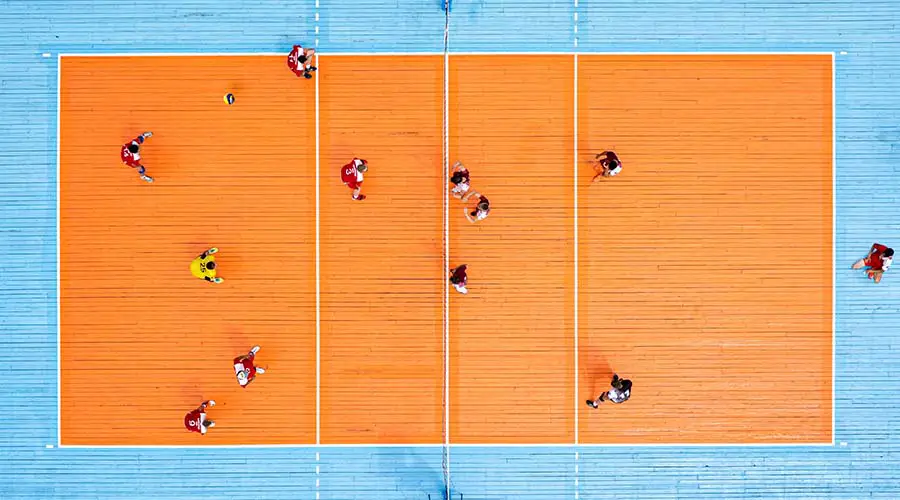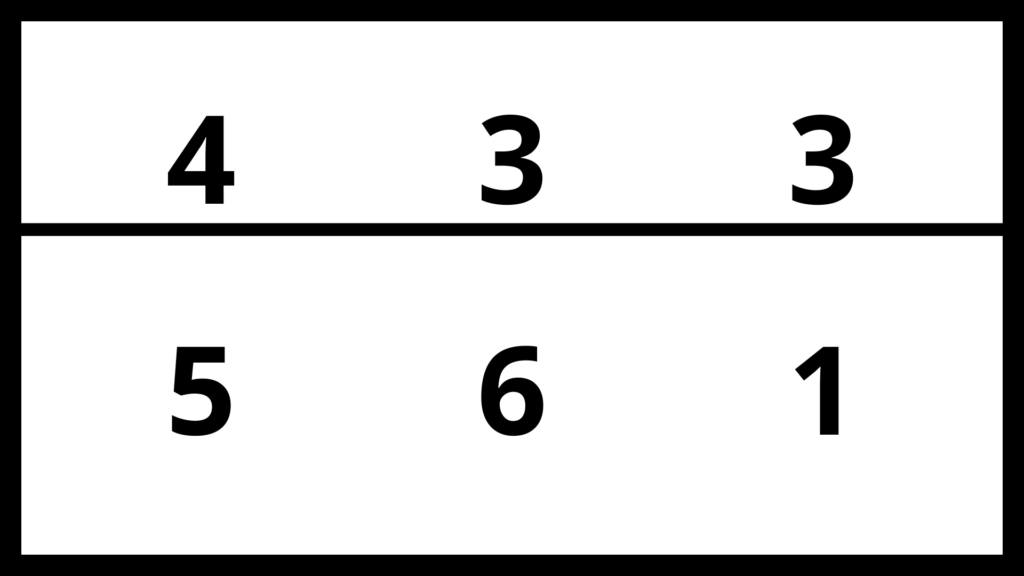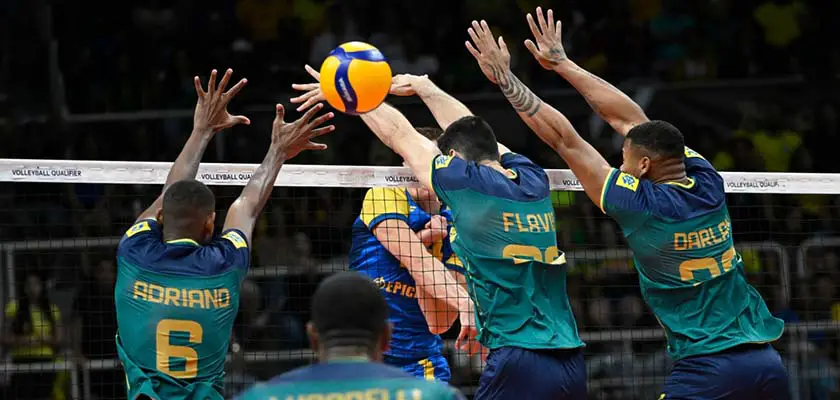Volleyball, a dynamic and strategic sport, originated in the United States around 1895, when William G. Morgan, in search of a less aggressive alternative to basketball, devised a game that combined elements of tennis, baseball, basketball and handball. Since then, volleyball has evolved significantly, becoming not only a form of entertainment, but also a global passion.
Volleyball arrived in Brazil in the 1910s, brought by American immigrants. From then on, the sport found fertile soil and flourished, conquering hearts and minds all over the country. Over the years, Brazil has become a volleyball powerhouse, collecting titles and producing some of the sport’s biggest stars.

Within this scenario of growth and development, volleyball tactical systems play a crucial role. These strategies not only shape the game, but also directly influence the outcome of matches. From meticulously planned defensive arrangements to precise, coordinated attacks, volleyball’s tactical systems are the backbone of successful teams;
In this text, we will explore the different volleyball tactical systems, from offensive to defensive, revealing how these strategies shape and define the modern game.
Participate in our free Whatsapp community and receive daily tips, news and trivia on over 50 sports! Click here to join.
Basic volleyball fundamentals
To understand the volleyball tactical systems, it is essential to know the basic fundamentals of the game:
- Serve: The serve is the first attack and starts the game. The main types of serve are underhand, overhand and overhead.
- Attack: The attack is the foundation that usually ends a rally. There are several types of attack, such as the cut.
- Block: The block tries to prevent the ball from going over the net and onto the floor of the opponent’s court.
- Lifting: The lifter is responsible for distributing the balls to the forwards.
- Reception: The reception of the serve is the first touch given by the team receiving the serve
Positioning: how do the players position themselves on the court?
And to complement the technical and tactical understanding of the definitions of volleyball’s tactical systems, it is necessary to bear in mind the positions that the players occupy on the court. The positioning of the players is crucial to ensuring effective defense and a coordinated attack. Check out how each position works below.

The arrangement of positions in volleyball follows a specific order, each playing a crucial role in the game. Position No. 1, known as right back, is assigned to the player responsible for the serve. Position number 2, called the net outlet, occupies a strategic position on the attack line.
In the center of the net, we have position No. 3, known as the middle net, which plays a key role in both attacking and blocking. Position No. 4, known as the net entry, is responsible for complementing the attack on the side of the court. To the left of the defense, we have position #5, known as the left back, while position #6, the center back, completes the defensive formation.
In positions 4, 3 and 2, the players are on the attacking line, which allows them to actively participate in attacking and blocking. On the other hand, in positions 1, 6 and 5, the players are in defense and cannot block. In addition, they can only attack if they are positioned behind the attack line, in the defense zone.
The positioning of the players follows a specific distribution:
- The player in position 1 should stand behind the player in position 2, to the right of the player in position 6;
- The player in position 2 should stand in front of the player in position 1 and to the right of the player in position 3;
- The player in position 3 must stand between the players in positions 4 and 2, in front of the player in position 6;
- The player in position 4 should stand to the left of the player in position 3 and in front of the player in position 5;
- The player in position 5 should stand behind the player in position 4 and to the left of the player in position 6;
- The player in position 6 should stand between the players in positions 5 and 1, behind the player in position 3.
Volleyball tactical systems: learn about offensive tactical systems
There are several offensive strategies that volleyball teams use to maximize their chances of scoring points. Some of the most common volleyball tactical systems include:
1. 6×0 system
In this system, all the players play the role of setters, providing a balanced distribution of the ball. It is commonly used by teams who value versatility and speed in their play, such as the Brazilian men’s national team, known for their ability to vary their attacks and surprise their opponents.
2. 3×3 system
Here, three players act as attackers and three as setters, offering a combination of attacking and support options. The Italian women’s national team is known for using this system effectively, standing out for the precision of their attacks and the synchronicity between the players.
3. 4×2 system
With four players acting as forwards and two as setters, this system offers flexibility in ball distribution and attacking options. The Russian men’s national team is an example of a team that uses the 4×2 system masterfully, combining powerful attacks with a solid defense.
4. 4×2 system with reversing/infiltration
A variation on the 4×2 system, with strategic inversions to confuse the opposing defense. The Japanese women’s team is known for its ability to use this tactic, surprising opponents with quick and unpredictable movements.
5. 5×1 system
One player acts as the main setter, while the other five are attackers, offering a constant attacking option. The Cuban men’s team is famous for its aggressive approach and effective use of the 5×1 system to dominate the game.
6. 5×1 system with inversion
Similar to the 5×1 system, but with strategic inversions to keep opponents off balance. The Chinese women’s team is renowned for its ability to adapt quickly during matches and for using this tactic to create attacking opportunities.
Now that you’ve understood how the main tactical systems in volleyball work, we’re going to show you two other types of system: serve-receive and defensive.
Serve-receive volleyball tactical systems
The serve reception is fundamental to initiating a successful attack. Some of the most commonly used reception systems are:
1. W serve reception system
- Used by beginner teams.
- Five players stand in a “W” shape to receive the serve.
- The sixth player out of reception is the setter (in the 6-0 system).
2. Semicircle reception system
- A variation of the W system.
- Each player is responsible for defending an area in front of them up to the net and behind them up to the end line of the court.
- It can be done with 4 or 5 players.
3. 3 player serve reception system
- Used by many professional teams.
- Three players stand in a “V” or “inverted V” shape to receive the serve.Used by many professional teams.Used by many professional teams.
- The libero is used in this defensive system.
- The setter, opposite (main attacker) and center (middle attacker) are freed from receiving the serve.
4. 2 player serve reception system
- Used by top-level teams that don’t use a libero (very rare).
- Also used by teams that serve with just the libero and a passer.
- In a team without a libero, the top players receive the serve, leaving the setter, the two center players and the opposite player to concentrate on the attacking moves.
Volleyball tactical systems: learn about defensive tactical systems
Defensive systems aim to neutralize the opponent’s attack. Some of them are:
- Simple Block: Attempt to prevent the ball from going over the net.
- Double Block or Classic Square: Two players form a joint block.
- Semi Circle with Simple Blocking: Combination of blocking and defense.
- Semi Circle with Double Block: More effective against fast attacks.
- Square with Triple Double Block: Advanced strategy for blocking different angles of attack.
Volleyball tactical systems are essential for the success of teams in the sport, both in attack and defense.
Did you like this content? Then keep browsing our site:



